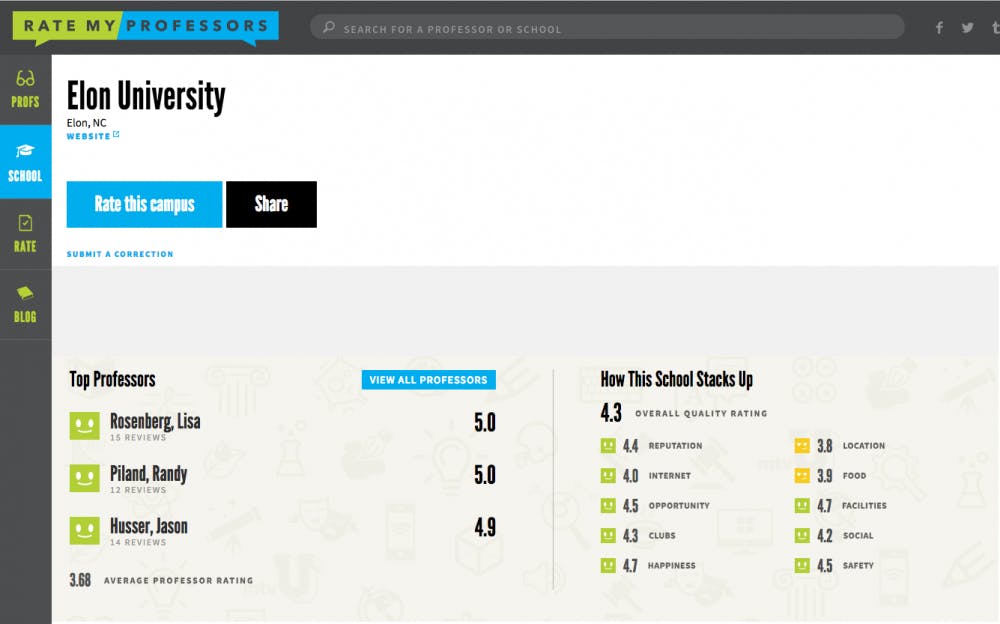As the drop-add period for class registration continues, a popular resource is ratemyprofessors.com, a website that allows students to leave anonymous reviews and ratings of their professors.
Divided and labeled by professor, school and ratings, the website has been around for 17 years now and is still highly viewed. The website contains more than 17 million professor ratings of 7 million professors in total. According to their website, 4 million college students make use of the content.
With more than 1,011 professors found for Elon University, faculty and staff are aware of the website and advise students to not entirely rely on the comments.
“I consider Rate My Professor a tool, but it by far is not the best tool,” said Rodney Parks, the university registrar. He said studentsshould try “[connecting] with faculty, [by] sending them emails asking about their classes, reviewing the syllabus ahead of time, speak to their peers and how it impacts their future in terms of their major.”
Andrea Metts, professor of statistics, usually pulls up her own rating page at the beginning of every semester. A 4.0 out of 5 on the website, Metts seeks to caution students as much as possible on the over-useof Rate My Professor.
“I can see how it would be a good resource for students, but I certainly don’t think the opinions are representative,” Metts said. “The people who leave ratings feel strongly one way or the other, and probably have a negative opinion. This is their way for anonymously retaliating.”
Associate Professor of Communications Glenn Scott agrees that those who post on the website are on either side of a hate-or-love spectrum.
“People post on Rate My Professor when they have some kind of intense response to a course and to a professor,” Scott said. “They either had a rewarding experience or talked themselves out of believing in the class.”
Scott urges students to challenge themselves and take the course regardless of who the professor is and what time the class is scheduled.
“I would really encourage students to not sign up based on what time [classes] are offered and to find out who these professors are,” Scott said. “What kind of value is there? And also, can I make a relationship with this professor that can last? Is that professor still going to care about my future?”
Parks, Scott and Metts admit that if they had a similar website at their disposal when they were in college, they would have used it. There were other methods in which they got the breakdown of courses and professors.
“One thing that hasn’t changed is the ever-persistent goal of finding those classes that help students balance their schedules,” Parks said. “That has probably been around since the dawn of higher education — students looking for creative ways of students to balance their schedule.”
The creative way to seek those professors and courses has been simplified. Freshman Nicole Kister said she uses the website to get a glimpse for her upcoming semester.
“I use it to optimize the best education I can get,” Kister said. I’ve tried to plan my schedule around to get certain professors, but their classes are the ones that get taken up first.”
Kister believes that there are instances in which the ratings are accurate.
“I have had professors with high ratings and positive comments that I can see why they got their high score,” he said. “I also notice that those that have lower scores have them because they are harder classes. The comments mention a professor who moves too fast and this was seen when I took the class.”
Upperclassmen also partake in using the site. Junior Sarah Collins, who uses the website, explained the long-term effects a negative review may have, as well as the motivations behind it.
“Unfortunately, I think one disgruntled student can post a negative review of a professor, and that review has the power to influence a lot of people for a long time,” Collins said.


